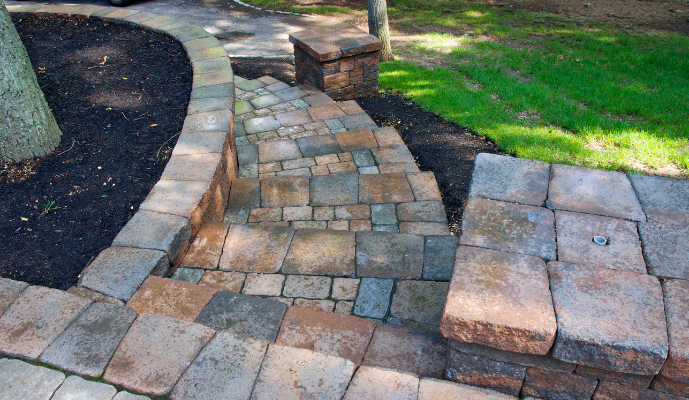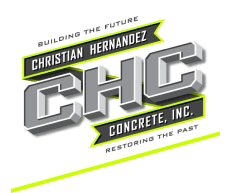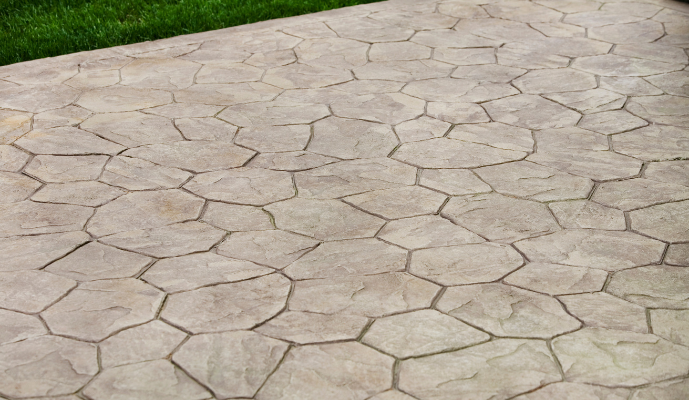Introduction
Sealing a concrete patio at the right time is essential to protect it from wear, weather damage, and staining. Understanding the ideal timing and method for sealing ensures long-lasting performance and an attractive finish.
Summary
This guide explores the best time to seal your concrete patio, how seasonal weather affects application, signs it’s time to reseal, and a step-by-step process for sealing. It also covers maintenance tips and frequently asked questions to help homeowners keep their patios in great condition.
Ideal Time to Seal a Concrete Patio
The ideal time to seal a concrete patio is when weather conditions are stable with moderate temperatures and low humidity. Homeowners should plan for a period from spring through fall when precipitation is minimal and temperatures range between 50°F and 90°F. Consistent weather helps the sealant bond effectively with the concrete, reducing the risks of premature drying, shrinkage, or poor adhesion.
How Do Weather Conditions Affect Concrete Patio Sealing?
Fluctuating weather can disrupt the sealant’s performance. High humidity slows solvent evaporation and lengthens crisp curing times, while excessive heat may cause the sealant to dry before penetrating the concrete. Maintaining temperatures between 50°F and 90°F with low wind speeds promotes an even, durable application.
Why Is Seasonal Timing Crucial for Concrete Sealant Application?
Seasonal conditions are key because sealants need a proper environment to cure and bond. In fall, cooler temperatures and reduced UV exposure help maintain the sealant’s strength; in spring, lower humidity improves application. Avoiding rain for at least 48 hours after application prevents the sealant from being washed away.
When Should You Avoid Sealing Your Concrete Patio?
Avoid sealing during extreme temperatures, high humidity, or when rain is imminent. If forecasts predict storms or temperatures dropping below 50°F, postpone the work. Early mornings and late evenings should be avoided as dew and sudden temperature shifts can cause uneven curing.
What Are the Key Benefits of Concrete Patio Sealing?
Sealing a concrete patio protects the surface from moisture, wear, and chemical stains while enhancing its appearance. This protective layer not only extends the patio’s durability but also simplifies cleaning and maintenance, resulting in improved curb appeal and long-term cost savings.
How Does Sealing Enhance Patio Durability and Longevity?
A quality sealant forms a barrier against water penetration, reducing the risk of cracks and erosion. It helps prevent freeze-thaw damage and minimizes wear from everyday use, keeping the structure sound for years and reducing the need for repairs.
In What Ways Does Sealing Improve Curb Appeal?
Sealing deepens the color and enhances the texture of a concrete patio, while also hiding minor surface imperfections. The glossy finish reflects light, making the area appear more spacious and attractive, instantly boosting its visual appeal.
Can Sealing Prevent Concrete Patio Damage and Stains?
Yes, sealing protects against damage from oil spills, deicing chemicals, and environmental pollutants. Sealed surfaces resist stains from household substances like detergent or plant residues, reducing the frequency of intensive cleanings and preserving the patio’s pristine look.
What Are the Signs Your Concrete Patio Needs Sealing?
Signs that your patio needs sealing include visible cracks, increased water absorption, and fading or uneven coloration. These indicators reveal that the protective barrier is worn thin, and timely resealing can prevent further damage.
How to Recognize Surface Wear and Cracks on Concrete Patios?
Look for small hairline cracks or larger fissures that may compromise the concrete. Frequent foot traffic, harsh cleaning agents, and weather stress can cause visible wear. Regular inspections will help spot signs of deterioration, prompting a timely reseal.
When Does Water Absorption Indicate Sealing Is Needed?
If water stops beading on your patio and begins to soak into the surface, it indicates the sealant has worn off. Excess water absorption increases the risk of freeze-thaw damage and staining. A quick water-droplet test can confirm if resealing is necessary.
What Role Does Fading or Discoloration Play in Sealing Decisions?
Fading or uneven coloring signals that UV rays and pollutants have degraded the sealant. This not only affects appearance but also reduces protection against environmental damage. Significant discoloration is a clear sign that resealing is needed to restore both vibrancy and durability.

How Often Should You Reseal Your Concrete Patio for Long-Lasting Protection?
Regular resealing is crucial for maintaining protection and appearance. Most patios should be resealed every 2 to 3 years, though frequency may vary based on usage and environmental conditions. Consistent inspections will help determine the optimal schedule.
What Factors Influence the Frequency of Concrete Patio Resealing?
Weather conditions, traffic intensity, and the original sealant type all affect resealing frequency. Areas with extreme temperature shifts or heavy chemical use (such as deicing) may require more frequent maintenance. High foot traffic can also accelerate wear.
How to Monitor Sealant Wear and Decide When to Reseal?
Monitor for visual signs such as fading, scratches, or increased water absorption. A simple water-beading test can indicate if the protective layer is weakening. Regular inspections and moisture tests help ensure resealing is done at the right time.
What Are the Risks of Delaying Concrete Patio Resealing?
Delays in resealing can lead to cracking, staining, and structural degradation due to water intrusion and freeze-thaw cycles. Unsealed surfaces are also more vulnerable to damage from oils and chemicals, potentially leading to expensive repairs later.
How Does Concrete Patio Cleaning Impact Sealing Effectiveness?
A clean patio is essential for effective sealant adhesion. Removing debris, stains, and contaminants ensures that the sealant bonds evenly and performs optimally, resulting in a longer-lasting protective barrier.
Why Is Proper Cleaning Essential Before Sealing?
Residual dirt, grease, or organic matter can block the sealant from bonding properly with the concrete. Using pressure washing and specialized cleaning solutions ensures that the surface is free of contaminants, leading to a more effective and uniform seal.
What Cleaning Methods Best Prepare Concrete Patios for Sealing?
Effective cleaning typically involves pressure washing to remove loose debris, followed by scrubbing with a pH-neutral cleaner and a stiff-bristle brush. Some homeowners also use steam cleaning to further sanitize the surface, ensuring an optimal base for the sealant.
How Often Should You Clean Your Concrete Patio to Maintain Sealant?
It is advisable to clean your patio at least once every six months, with more frequent cleanings in high-traffic or debris-prone areas. Seasonal cleaning during spring and fall helps remove contaminants that could degrade the sealant over time.
Frequently Asked Questions
Q: What type of sealant is best for a residential concrete patio?
A: Acrylic sealants are often preferred for residential use because they are easy to apply, enhance color, and provide moderate durability.
Q: Can I apply the sealant in direct sunlight?
A: No. Direct sunlight may cause rapid drying, impairing proper bonding. Indirect sunlight or shaded conditions are ideal.
Q: How do I know if my concrete patio absorbs water?
A: Perform a water-beading test. If water soaks into the surface instead of forming droplets, the sealant may be worn and resealing is needed.
Q: Is it better to seal a new patio or wait until it shows aging signs?
A: Sealing should be done within a few months of installation for new patios, while older patios should be resealed when signs of wear appear.
Q: How do temperature and humidity affect the drying time of sealants?
A: High humidity slows drying, and very high temperatures can cause rapid drying that hinders proper curing. The optimal range is between 50°F and 90°F.
Q: What are the risks if a patio isn’t resealed regularly?
A: Unsealed patios are prone to cracking, staining, and weather-related damage, which may shorten their lifespan and increase maintenance costs.
Q: Can I mix different types of sealants for better performance?
A: It is best to use one type of sealant, as mixing can create chemical incompatibilities that reduce effectiveness.
Q: Does sealing affect the natural look of concrete?
A: Proper sealing enhances concrete’s natural appearance by deepening its color and adding a subtle sheen; the level of gloss can be adjusted based on the product used.
Final Thoughts
In summary, sealing your concrete patio at the right time is crucial for maintaining its structural integrity and appearance. By applying sealant during stable weather, preparing the surface properly, and monitoring for signs of wear, homeowners can enjoy a durable, attractive outdoor space. Explore our expert paving services at CHC Concrete for durable, high-quality surfaces that enhance both residential and commercial properties.

